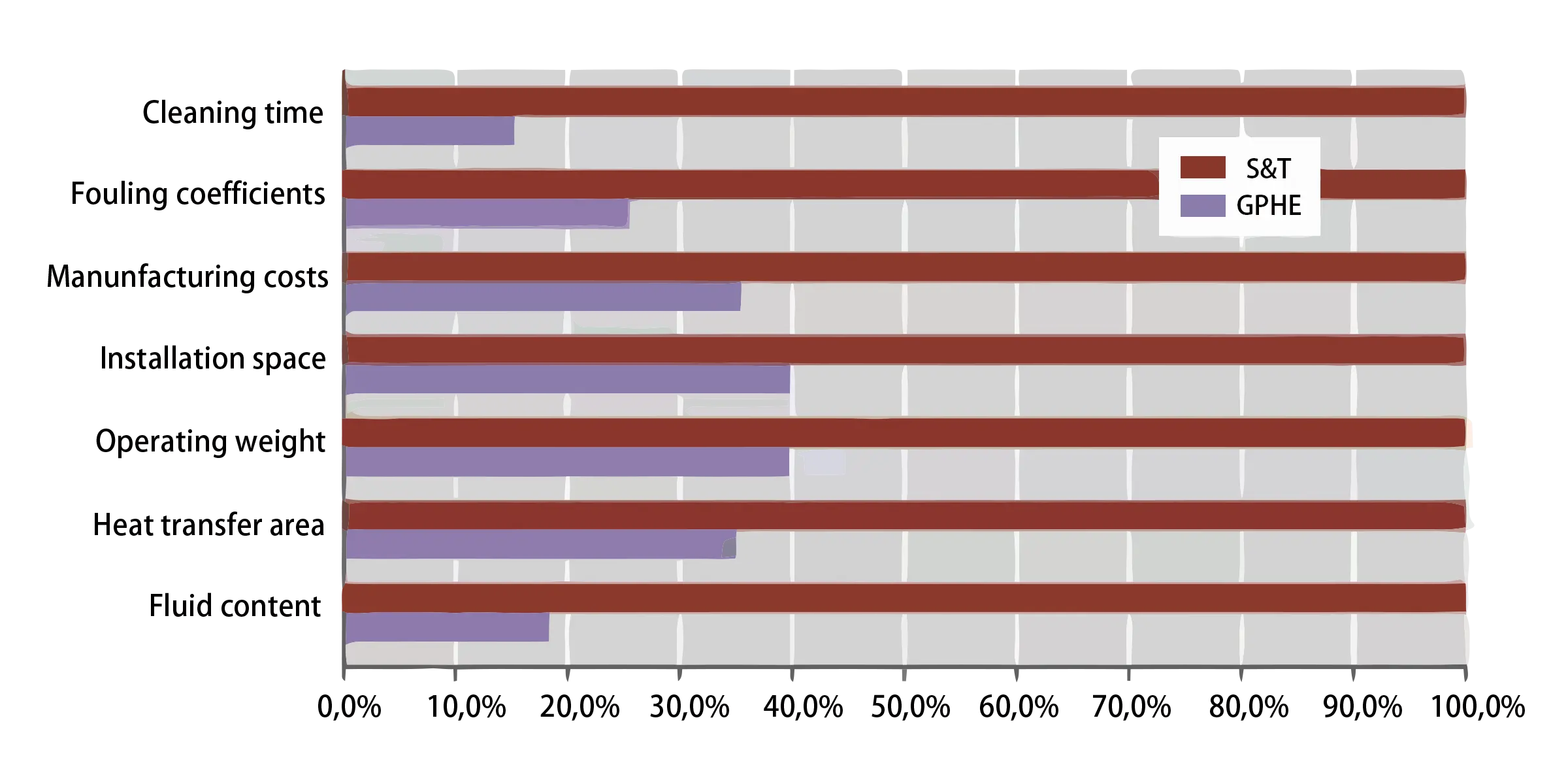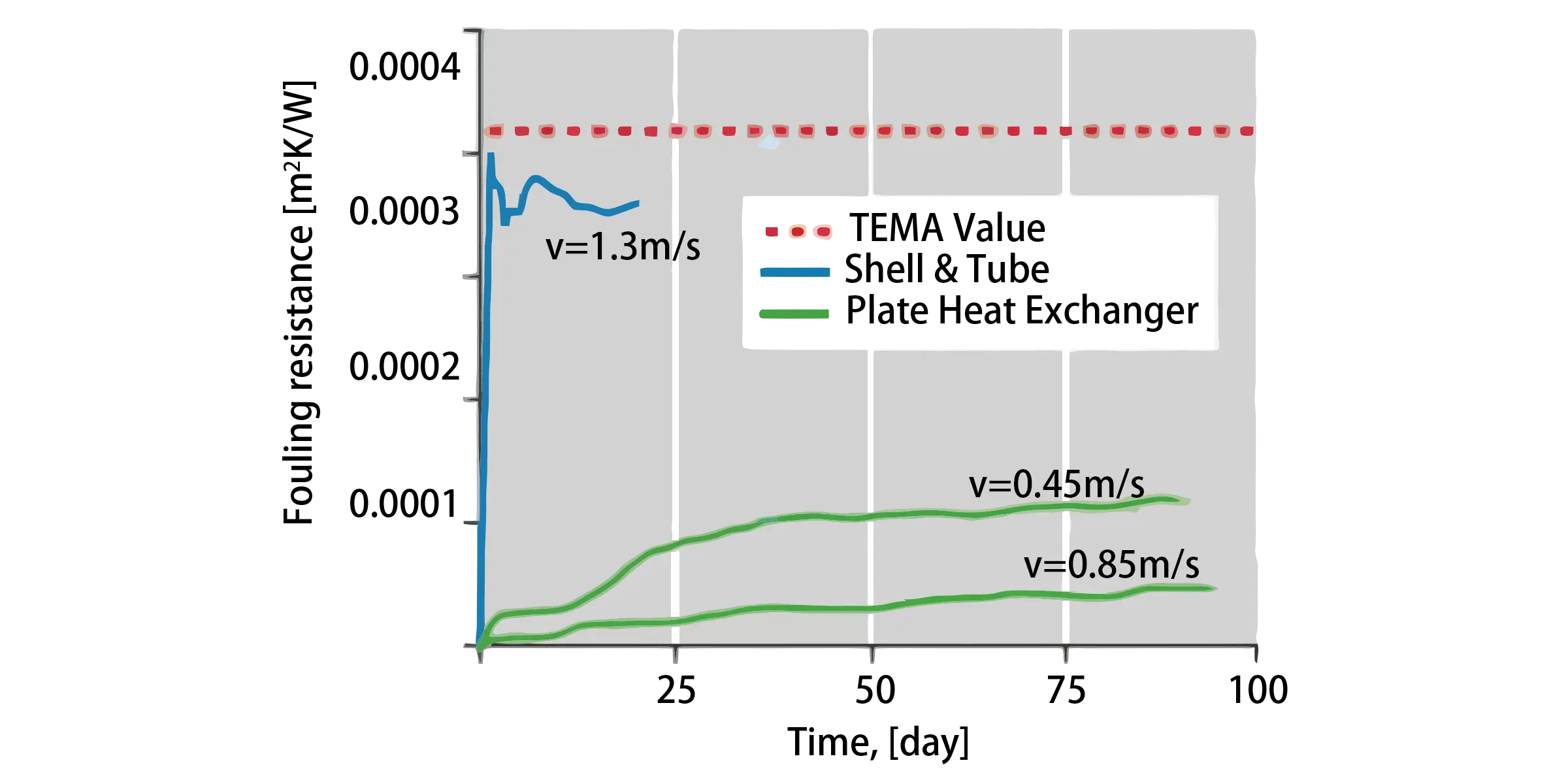Plate Heat Exchanger fouling and scaling are curable as long as the operator knows the cause and methods.
Plate Heat Exchanger Fouling and Scaling: Unmasking Efficiency Threats
In the realm of plate heat exchangers, efficiency is paramount. As industry leaders, we recognize the critical role these devices play across various sectors. In this comprehensive guide, we delve into the intricate world of heat exchange, shedding light on the challenges that can compromise efficiency—specifically, fouling and scaling in heat exchangers.
Fouling, often caused by dirt, debris, and organic matter, stealthily infiltrates exchanger surfaces, impeding heat transfer and energy efficiency. Scaling, characterized by mineral deposits like calcium and magnesium, forms stubborn layers that further hinder heat exchange, increasing energy costs.
Our expertise allows us to uncover preventive measures, material choices, and cutting-edge cleaning techniques that effectively combat these threats. Through advanced solutions, we empower you to maintain your plate heat exchangers’ efficiency and extend their lifespan, ensuring optimal performance across applications such as HVAC, chemical processing, and power generation.
Ready to optimize your heat exchangers’ performance? Contact us today to elevate efficiency and save on energy costs.
Plate Heat Exchanger Fouling and Scaling: Understanding its Definition and Impact
Defining Fouling and Scaling in Plate Heat Exchanger
Irrespective of the plate material, the efficiency of plate heat exchangers (PHEs) naturally diminishes over years of operation. This decline is predominantly attributed to fouling, an intricate process marked by the accumulation of unwanted materials on the heat exchange surfaces. The unchecked persistence of fouling can escalate into more severe issues, including corrugation and leaks.
On the other hand, a subset of fouling emerges as scaling—a phenomenon characterized by the accumulation of minerals on the surfaces of these vital components. This mineral-laden buildup presents a unique challenge that warrants exploration.
Contributing Variables
Fouling, a gradual accumulation of materials on heat exchange surfaces, arises from a combination of elements. These encompass water pH, product viscosity, and the roughness of component surfaces, to name a few. The confluence of these variables collectively shapes what is known as the “fouling factor.” This factor quantifies the resistance to heat transfer, serving as a numeric reflection of thermal resistance within your system.
Key Fouling Factors of Plate Heat Exchanger
In the realm of heat exchangers, various industries encounter specific fouling challenges rooted in their processes. Dairy applications, for instance, introduce fats, sugars, and proteins into the mix, all of which contribute to fouling tendencies. Similarly, food and beverage applications contend with particulate matter that can conglomerate and obstruct the flow. In the pharmaceutical sector, the production of cosmetic and pharmaceutical particles during processing can lead to adhesion and accumulation on heat exchange surfaces.
To counteract fouling, operators navigate a landscape governed by four pivotal processing factors: fluid velocity, fluid temperature, fluid chemistry, and materials of fabrication.
Impact of Fouling and Scaling on Plate Heat Exchanger Performance
Cooling water consistently carries a diverse array of soluble and insoluble suspended particles, encompassing compounds like calcium carbonate and sulfate. When these particles surpass specific concentration levels, they adhere to the plate surfaces, initiating both fouling and scaling processes. Gradually, these particles accumulate, forming layers on the surface of the plates. The consequences of both fouling and scaling are significant—an impediment to the seamless transfer of thermal energy between the two fluids within the system.
As these insulating layers, resulting from both fouling and scaling, thicken over time, the performance of the plate heat exchanger (PHE) experiences a notable deterioration. This decline extends beyond mere efficiency reduction; its implications reverberate across various operational dimensions. The reduction in efficiency translates to compromised heat transfer efficacy, necessitating heightened energy input to achieve the desired temperature differentials. This escalated energy demand inevitably translates to increased energy consumption. However, the consequences reach further than energy expenditure alone. The effects extend to product sizes and overall process efficiency, both of which suffer due to inadequate temperature control.
By immersing ourselves in the depths of fouling’s intricacies, we arm ourselves with the expertise needed to counteract its encroachment. As dedicated stewards of plate heat exchangers, HFM primed to offer tailored solutions that combat fouling’s effects, optimizing heat exchange systems and ensuring enduring operational efficiency. Contact us today to learn more about plate heat exchanger spare parts replacement.
Plate Heat Exchangers vs. Shell and Tube Heat Exchangers in the Battle Against Fouling

Figure1 – Shell and Tube Heat Exchanger and Gasketed Plate Heat Exchanger Comparison
In Figure 1, we present a comprehensive comparison between gasketed plate heat exchangers and shell-and-tube heat exchangers, focusing on critical performance metrics such as efficiency, space utilization, weight, and cleaning time. The results reveal a remarkable difference, positioning plate heat exchangers as the superior choice, outperforming shell-and-tube heat exchangers by an impressive factor of 3-5 times.
One of the key factors contributing to the plate heat exchanger’s enhanced performance is the presence of a high degree of turbulence within its design. This heightened turbulence translates to an improved rate of sediment removal, effectively reducing the susceptibility to fouling. Moreover, the uniform velocity distribution in plate heat exchangers minimizes the existence of low-speed areas that are known to be particularly prone to fouling—a distinctive advantage over most shell-and-tube heat exchanger designs.

Figure2 – Fouling Resistance Comparison
Figure 2 offers a telling comparison between fouling resistance within the plate heat exchanger’s cooling water and fouling resistance on the tube side of a shell-and-tube heat exchanger, both operating at the same speed. The disparity in pollution resistance is evident, with the fouling resistance within the plate heat exchanger significantly lower than that of its shell-and-tube counterpart.
By capitalizing on the inherent strengths of plate heat exchangers, your operations can benefit from improved efficiency, reduced maintenance demands, and enhanced resistance to fouling and scaling challenges. As a pioneering provider of plate heat exchanger solutions, HFM is dedicated to delivering optimized systems that mitigate fouling’s impact and ensure enduring efficiency. Connect with us today to explore the advantages of plate heat exchangers and discover how we can tailor solutions to your specific industry needs.
Case Studies: Revealing the Impact of Fouling and Scaling on Heat Exchanger Efficiency
At HFM Plate Heat Exchanger, our commitment to excellence extends beyond delivering top-quality products. We take pride in our in-depth experience and expertise in providing effective solutions for a wide range of heat exchange challenges. As leaders in the industry, we understand the diverse needs of various sectors and strive to optimize heat exchanger performance across applications. Join us as we delve into real-world case studies that showcase our capabilities and the transformative impact of our solutions.
Case Study 1: Scale Challenges in Marine Lubricating Oil Cooler
Introduction:
Lubricating oil coolers in marine environments are vital for maintaining optimal temperatures and efficiency. However, the interaction between lubricating oil and cooling water can lead to scaling issues, impacting performance and reliability.
Problem:
In this case, the lubricating oil cooler was subjected to high temperatures, causing scaling on the water-cooled side over time. The accumulation of scale reduced heat transfer efficiency and risked flow channel blockage. Some instances were characterized by oil scale formation on the hot side due to lubricant quality and prolonged maintenance cycles.
Solution:
Plate heat exchangers can be cleaned using non-disassembled internal cycle cleaning. By employing an internal circulation device and special agents, scaling can be removed without dismantling. An evaluation of the internal scaling of the heat exchanger is conducted before cleaning. The plates are combined with agents for soaking and scaling removal, ensuring optimal performance.
Case Study 3: Scaling Challenges in Water Generators
Introduction:
Water generators are essential for heat exchange between sea water and fresh water, but high-temperature conditions often lead to cooling side scaling.
Problem:
Scale formation on the cooling side reduces heat transfer efficiency and necessitates regular maintenance to ensure optimal operation.
Solution:
Non-disassembled internal cycle cleaning is effective in maintaining water generator performance. Employing an internal circulation device and special agents, routine cleaning is carried out. Regular evaluations of internal scale conditions and heat exchange device cycles guide the cleaning process. For heavy limescale, a weak acidic agent is suitable.
Case Study 2: Scaling and Microbial Accumulation in Central Coolers
Introduction:
Central coolers play a crucial role in sea water and fresh water heat exchange, but they are susceptible to scaling and microbial attachment, affecting heat transfer efficiency.
Problem:
In marine conditions, central coolers often experience scaling without proper maintenance. Seawater side microbial attachment exacerbates the issue. Severe cases necessitate removal and soaking with a portable container device and specialized agents to address accumulation.
Solution:
Non-disassembled internal cycle cleaning is an effective solution. By utilizing an internal circulation device and special agents, the heat exchanger can be cleaned without dismantling. Regular evaluation of the internal scaling condition of the heat exchange guides the cleaning process. For heavy limescale, a weak acidic agent is recommended.
Case Study 4: Scale Management in Marine Boiler and Fuel Oil System
Introduction:
Marine boilers and fuel oil systems are susceptible to scaling and impurities due to the use of heavy diesel fuel.
Problem:
Long-term use of the boiler leads to internal scaling, affecting efficiency and performance. Fuel oil systems face impurities and high viscosity, requiring regular maintenance.
Solution:
Circulation devices and specialized agents are used for cleaning and maintenance in both marine boilers and fuel oil systems. Effective pipeline, fuel pump, and oil distributor maintenance is crucial. In marine heat exchangers, titanium material is commonly used, and cleaning agents with high scaling force and efficiency are recommended. Considering green products aligns with environmental regulations.
Preventative Measures Against Fouling and Scaling in Plate Heat Exchanger
Efficiency is the cornerstone of optimal plate heat exchanger (PHE) performance, and it hinges on meticulous maintenance and strategic measures to prevent fouling and scaling. These insidious adversaries can stealthily compromise the efficiency of your PHE over time, leading to increased energy consumption, reduced heat transfer, and even equipment failure.
Minimizing Plate Heat Exchanger Fouling and Scaling
At the forefront of fouling and scaling prevention lies a series of meticulous steps that act as formidable barriers against their encroachment:
1. Regular Maintenance: Consistent inspection and maintenance schedules are pivotal in identifying early signs of fouling and scaling. Timely intervention can mitigate their impact and extend the efficiency and lifespan of your heat exchanger.
2. Proper Fluid Filtration: The role of fluid filtration cannot be underestimated. Effective filtration systems capture suspended particles and contaminants before they settle on heat exchange surfaces, effectively reducing the risk of fouling.
3. Chemical Treatments: Introducing appropriate chemical treatments can alter fluid properties to deter fouling and scaling. These treatments inhibit the adhesion of particles and minerals to heat exchanger surfaces, preserving efficiency.
4. Optimal Material Selection: Choosing the right materials for heat exchanger construction is a strategic move. Some materials have inherent resistance to fouling and scaling, minimizing their impact and facilitating easier maintenance.
5. Fluid Velocity and Flow Control: Properly regulating fluid velocity and flow patterns within the heat exchanger can prevent the deposition of particles and minerals on surfaces, preserving efficiency.
Discover how to conquer these hidden challenges and explore our solutions to ensure your plate heat exchangers operate at their peak efficiency, achieving energy and cost savings of up to 40%. For personalized guidance on optimizing your heat exchanger performance and to learn more about our comprehensive range of services, including Plate Heat Exchanger Cleaning, contact our expert team today.
Contact us to take the first step towards maximizing your heat exchanger efficiency, achieving significant energy and cost savings, and extending its lifespan.
